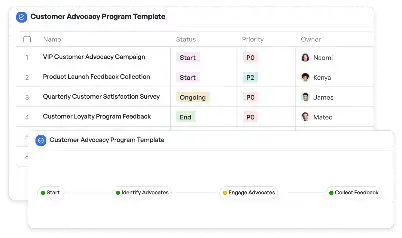Drift Detection Threshold Configuration Guide
Achieve project success with the Drift Detection Threshold Configuration Guide today!

What is Drift Detection Threshold Configuration Guide?
Drift Detection Threshold Configuration Guide is a comprehensive framework designed to help teams set up and manage thresholds for detecting data drift in machine learning models. Data drift occurs when the statistical properties of input data change over time, potentially leading to degraded model performance. This guide is essential for industries relying on predictive analytics, such as finance, healthcare, and e-commerce, where maintaining model accuracy is critical. By using this guide, teams can establish robust thresholds that trigger alerts when drift is detected, ensuring timely intervention and model retraining. For example, in a fraud detection system, a well-configured drift detection threshold can identify shifts in transaction patterns, enabling proactive measures to mitigate risks.
Try this template now
Who is this Drift Detection Threshold Configuration Guide Template for?
This template is ideal for data scientists, machine learning engineers, and operations teams responsible for maintaining the performance of predictive models. It is particularly useful for organizations in sectors like finance, where detecting anomalies in transaction data is crucial, or in healthcare, where patient data trends must be monitored for accurate diagnostics. Typical roles benefiting from this guide include data analysts setting up monitoring systems, ML engineers configuring thresholds for model retraining, and business stakeholders ensuring compliance with regulatory standards. For instance, a data scientist working on a customer churn prediction model can use this guide to set thresholds that detect significant changes in customer behavior patterns.

Try this template now
Why use this Drift Detection Threshold Configuration Guide?
The primary advantage of this guide lies in its ability to address specific challenges associated with data drift. For instance, in a predictive maintenance system, undetected drift in sensor data can lead to equipment failures and costly downtime. This guide provides a structured approach to configuring thresholds that minimize false positives and negatives, ensuring accurate drift detection. Additionally, it includes best practices for integrating drift detection into existing workflows, such as automated alerts and retraining pipelines. By using this guide, teams can reduce the risk of model degradation, maintain high levels of accuracy, and ensure that business-critical decisions are based on reliable data.

Try this template now
Get Started with the Drift Detection Threshold Configuration Guide
Follow these simple steps to get started with Meegle templates:
1. Click 'Get this Free Template Now' to sign up for Meegle.
2. After signing up, you will be redirected to the Drift Detection Threshold Configuration Guide. Click 'Use this Template' to create a version of this template in your workspace.
3. Customize the workflow and fields of the template to suit your specific needs.
4. Start using the template and experience the full potential of Meegle!
Try this template now
Free forever for teams up to 20!
The world’s #1 visualized project management tool
Powered by the next gen visual workflow engine




